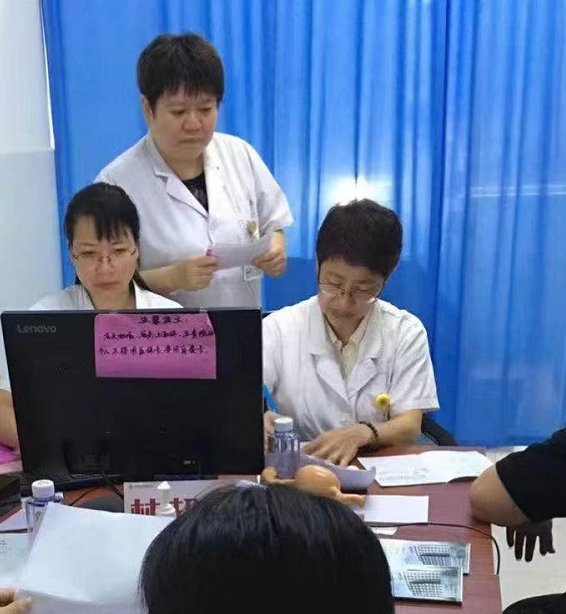A little over a year ago,
48-year-old Ms. Chen found multiple inexplicable pains in her body.
After several treatments, even top-notch antibiotics,
There was no significant pain relief.
Because the etiology could not be clarified,
Ms. Chen was once suspected by doctors to be mentally ill.
Finally, the cause was found in the Provincial Maternal and Child Health Hospital
After several setbacks, the cause of the pain was finally found
Ms. Chen suffered from inexplicable pain in many parts of her body more than a year ago. Later, pain in the lower back, buttocks muscles and other parts also appeared one after another, accompanied by severe abdominal bulge.
In desperation, Ms. Chen came to a hospital in Fuzhou for treatment. The doctor continued to give anti-inflammatory treatment and upgraded the antibiotics several times. Finally, even the top antibiotic used in the ICU, Tai Neng, was used, but the pain still could not be relieved significantly.
What confuses the doctor is that Ms. Chen has checked all the inflammatory indicators many times and found that there is no organic disease in the painful area. Doctors began to suspect that Ms. Chen had a mental illness.
On the recommendation of a friend, Ms. Chen finally found the chief physician Lin Chaoqin, who specializes in the diagnosis and treatment of intractable gynecological diseases in the pelvic floor specialist of the Provincial Maternal and Child Health Hospital. During the consultation, Director Lin Chaoqin found that Ms. Chen had an abnormal gait and could not walk normally. After a detailed gynecological examination, she found that her pelvic floor muscles were highly tense, and painful nodules were touched, and the pressure could be radiated to the lower abdomen and thighs.
After inquiry, it turned out that Ms. Chen received anti-inflammatory treatment in a local hospital for a period of time due to vaginitis more than a year ago. However, due to non-standard treatment, the symptoms have been repeated.

Based on experience, Director Lin Chaoqin diagnosed Ms. Chen with chronic pelvic pain (myofascial pelvic pain syndrome). The source of many pains is actually in the pelvic floor. According to the pelvic floor rehabilitation treatment plan formulated by Director Lin Chaoqin, Ms. Chen’s pain was relieved after one day of treatment. After one course of treatment, the pain was significantly relieved, and she was able to walk normally.
A common and easily misdiagnosed disease
In fact, Ms. Chen’s chronic pelvic pain is a very common pelvic floor disease. The detour is not an exception.
This disease is easy to be misdiagnosed because there is no organic disease or inflammation in the corresponding pain site during CT, B-ultrasound, and magnetic resonance examinations.
Therefore, some doctors can only attribute patients to mental or mental illnesses when they cannot find the cause of the patient’s repeated visits, but they always describe inexplicable pain. Suspect.
“Most people think that the painful part is the problem part. In fact, about 75% of the pain in these painful parts is caused by the trigger point of the pelvic floor. Because the pain point of the pelvic floor (also known as the trigger in medicine) Point) is more secretive, so there are more misdiagnoses.” said Wu Nengxiu, deputy chief physician of the pelvic floor specialist of the Provincial Maternal and Child Health Hospital.

Improper training and improper posture are also the causes of the disease
For unexplained chronic For pelvic pain, a professional pelvic floor specialist will identify the pain point through trigger point examination and pelvic floor electromyography screening after excluding organic lesions. When the cause is identified, usually after several courses of treatment, the patient’s pain can be greatly relieved.
Deputy Director Wu Nengxiu said that patients with chronic pelvic pain are related to the following factors:
✦Many often have a history of severe acute pelvic inflammatory disease without thorough treatment;
< p>✦ Pelvic surgery, childbirth injury, fall, emotional stress, chronic pelvic inflammatory disease, pelvic tumor, surgical scar involvement and other factors.
✦Inappropriate pelvic floor muscle rehabilitation training and long-term improper sitting posture can also cause pelvic floor muscle tension, which in turn can cause injury.
Clinical findings of chronic pelvic pain involve the pelvis, vagina, rectum, vulva, or bladder, and may also involve the thighs, buttocks, or lower abdomen. In addition to pain, some patients also experience repeated symptoms such as frequent urination, urgency, and changes in bowel habits.
If women have long-term pain or symptoms with no clear cause, it is recommended to go to a pelvic floor specialist for investigation.
Source: Fujian Health News All Media Reporter: Lin Ying